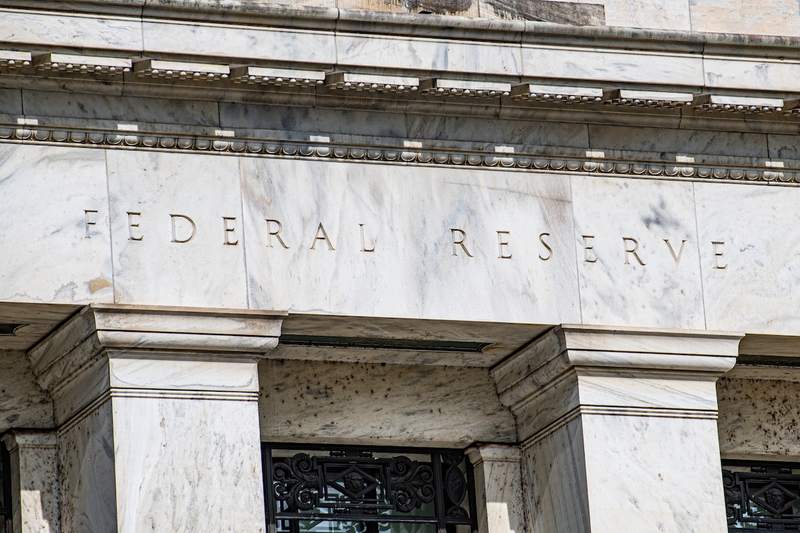As predicted, the Federal Reserve left interest rates unchanged at its Jan. 29 meeting. What does that mean, and how does it affect your ability to buy a home?
It’s easy to find online articles and pundits offering often uninterpretable insights into the Federal Reserve, the overall economy and how everything affects its decisions on interest rates. Despite this, I’ve not yet found one that explains this 10,000-piece jigsaw puzzle in a way that anyone without a Ph.D. in economics can understand.
That’s where this column, Quickenomics, comes in. Our goal is to help you understand what you’re reading in the media, help you interpret various economic decisions and data points, and help you solve the riddle: “What does that do for my wallet?”
Specifically, we’ll focus on The Fed and its rate decisions, and what they mean for you and for the economy.
Key Takeaways:
- The Federal Reserve is the central bank of the United States, and its decisions influence market interest rates for consumer loans and mortgages.
- The Fed’s decisions rely on data collected about employment and inflation and how those factors change monthly and yearly.
- Many analysts try to predict the Fed’s decisions by following the data and market trends.
What Is The Fed And What Does It Do?
So, to start, what is the Fed? The Federal Reserve is the central bank of the United States. Federal Reserve monetary policy includes setting interest rates, which is handled by the Federal Open Market Committee. It meets eight times a year to determine three things:
- The direction of the federal funds rates – also known as discount rates – which essentially determines “the cost of money.” More on this in a bit.
- Reserve requirements, i.e., how much money banks must keep on hand.
- Open market operations, which cover the buying and selling of financial securities in the markets.
What’s Your Goal?
Buy A Home
Discover mortgage options that fit your unique financial needs.

Refinance
Refinance your mortgage to have more money for what matters.
Tap Into Equity
Use your home’s equity and unlock cash to achieve your goals.
What Is The Federal Funds Rate?
The easiest way to understand the federal funds rate is to think of it as “the cost of money” for financial institutions.
Like any product, borrowing money comes with a cost, typically calculated as an interest rate. The federal funds rate is a target the FOMC sets for what banks charge each other to borrow money overnight. The Fed adjusts the interest rates it charges banks, which influences the rates that banks charge each other.
So, what does that have to do with you? The federal funds rate is the cost of borrowing money, and banks must recoup that cost to stay in the black. They usually do so by passing it on to you. When you need a mortgage or maintain a balance on your credit card, the bank will charge you an interest rate that covers its costs, i.e., the federal funds rate, plus some level of profit.
If the federal funds rate goes up, banks will increase the rates they charge their customers. If rates fall, lenders can cut rates for customers and still make a profit.
That means the economic impact of FOMC decisions is felt nationwide.
Ready To Become A Homeowner?
Get matched with a lender that can help you find the right mortgage.
What Guides The Fed’s Decisions?
The two leading economic indicators the Fed adjusts the federal funds rate to account for are the labor market and monetary inflation. Here’s how they are connected.
Let’s say a company takes out a loan to hire more employees and expand its business. When the federal funds rate is low, the lender can charge the company a lower interest rate and still make money. The company borrowing the money requires less profit to repay the loan and generate a profit, making the loan less of a risk.
When companies do this while rates are low, more jobs are created in the economy. When more jobs are created, more qualified employees are in demand, and salaries increase. When salaries increase, workers have more money to spend than before and likely will buy more, increasing demand for products. Increased demand for products raises prices, reducing the value of people’s money. This is the classic definition of inflation caused by a hot labor market.
When inflation is high, the Fed may rein it in by raising interest rates. That means it’s more expensive and risky for the company to borrow money to hire more employees, so it may cut back or cancel its expansion plans. This reduces worker demand, and wages will stagnate or even fall, reducing how much money people have to spend. This cools the economy and reins in inflation.
It’s through actions like this that the Fed considers labor markets and inflation factors to keep the economy on a stable path and avoid the extremes of boom-and-bust economic cycles.
Take The First Step To Buying A Home
Find a lender that will work with your unique financial situation.
Predicting The Fed’s Decisions
Now, it goes without saying that many people want to know what the Fed will do to interest rates so they can figure out whether it makes sense to get that new credit card, apply for a new car loan or refinance their mortgage.
Wall Street analysts do this all the time, and their projections can affect the stock market, bond prices and daily mortgage rates.
What information do Wall Street analysts consider when making educated guesses about what the Fed will do? They look at three primary economic indicators.
The Consumer Price Index
The consumer price index reviews the monthly and annual changes to a basket of everyday goods and services, such as housing, energy (like fuel and electricity), food and more. Here’s an example of how the CPI works.
Say the average price per gallon of gas in January 2024 is $1. In January 2025, the average price per gallon is $1.03. That would mean that in one year, the price of gas has gone up 3%. Now, apply this logic to the entire basket of goods tracked by the consumer price index, and you’ll have the main reading on inflation from this economic indicator.
The Personal Consumption Expenditures Price Index
The personal consumption expenditures price index is the primary inflation reading that the Fed uses. While it’s similar to the CPI, it’s more complex and includes additional data such as salaries. As with the CPI, you want to compare the published PCE index with what economists were expecting to get a sense of which direction the economy is heading.
For both CPI and PCE, there are four measurements to look at and compare with economists’ expectations:
- CPI and PCE year-over-year percentage change, as in the gasoline example above.
- Core CPI and PCE year-over-year percentage change. The core version of these indexes excludes items with more volatile pricing, typically food and energy.
- Month-over-month change for both CPI and PCE indexes.
- Month-over-month change for the core CPI and PCE indexes.
The Employment Situation
The employment situation report includes two measurements the Fed considers when adjusting the federal funds rate:
- The unemployment rate. The unemployment rate takes all unemployed people in the market and divides it by the total number of available people in the workforce. Compare this number to what economists were expecting.
- Total nonfarm payrolls. This number indicates how many new jobs have been created in the economy in a month, excluding the agriculture sector. Economists estimate this number, and the market and the Fed will react depending on how close or far off the estimate was compared to the number reported on the employment situation. Typically, when an economy is contracting, the number will be lower than when it is expanding.
The data itself is important for all three of these monthly reports, but what’s even more influential for the Fed is how the data compares to economists’ expectations and the Fed’s targets for the indicator. Say the unemployment rate for December 2024 came in at 4.1%, below the expected rate of 4.2%. That suggests employment is stronger than the market has anticipated and has priced in.
From there, we need to understand if the Fed is trying to grow or cool the labor market. If the Fed is looking to tame growth in the labor market and employment is still growing, it may decide to tighten economic policy by raising interest rates. This would limit the number of people that employers could hire because it would be more expensive for them to borrow money to pay for those jobs.
Doveish Or Hawkish?
Equally as important as the FOMC rate decision is the tone projected during the press conference that immediately follows. The chairman of the board of governors of the Federal Reserve, currently Jerome Powell, always holds a press conference with a statement and a Q&A session following the Fed’s decision. In this press conference, analysts, economists and journalists look for tone and commentary clues to understand the Fed’s approach and outlook for future short-term decisions.
The two terms used to describe that tone are hawkish and doveish:
- The Fed is seen as hawkish when trying to tighten monetary policy to keep inflation in check, which usually means an increase in the federal funds rate.
- The doveish approach is to loosen monetary policy, reduce the federal funds rate and spur economic growth.
How To Track Market Reactions
If you want to track Wall Street analysts’ guesses online, you can check websites like CME Group FedWatch, use an economic calendar like MarketWatch’s calendar, or ask your preferred AI tool.
Common sites you can use to follow FOMC predictions and resources include:
Another way to get a read on market sentiment is to search for one of the three cited reports and add the words “market reaction.” This will give you articles explaining how markets are reacting.
If expectations are met, the market will be happy because their predictions about the Fed’s decision will bear more evidence, and stocks will stay flat or go up. If expectations are not met, the market will go down because analysts will be unhappy with the economic reading, as the odds on their bets regarding FOMC rate decisions become less certain.
You can also do the same once the Fed’s decision has been made. On the second day of any FOMC meetings, search for “FOMC press release.” If you want to see the market’s reaction, include “market reaction” in your search.
The Bottom Line
The Fed plays a vital role in setting interest rates, which lenders follow when setting the rates you pay when you borrow money. Understanding how the economics of interest rates work can help you save money and better plan for the future.

Ben Shapiro
Ben Shapiro is an award-winning financial analyst with nearly a decade of experience working in corporate finance in big banks, small-to-medium-size businesses, and mortgage finance. His expertise includes strategic application of macroeconomic analysis, financial data analysis, financial forecasting and strategic scenario planning. For the past four years, he has focused on the mortgage industry, applying economics to forecasting and strategic decision-making at Quicken Loans. Ben earned a bachelor’s degree in business with a minor in economics from California State University, Northridge, graduating cum laude and with honors. He also served as an officer in an allied military for five years, responsible for the welfare of 300 soldiers and eight direct reports before age 25.












